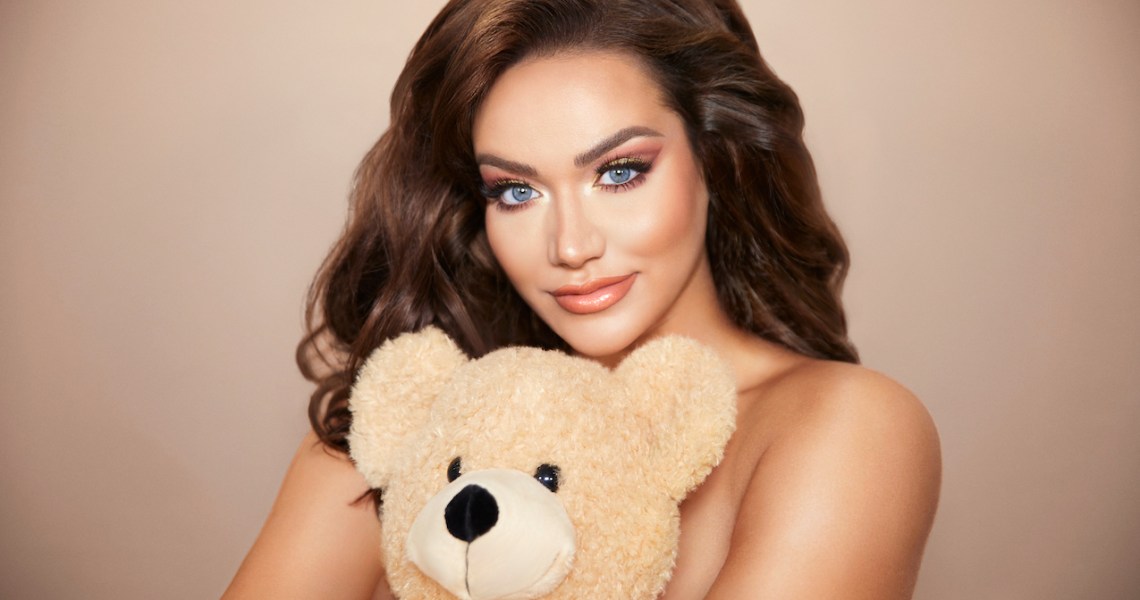For the last year, Too Faced leaned on influencers to help produce campaign photoshoots, adding a new dimension to its larger partnership strategy.
Before Covid-19, Too Faced, like many other beauty brands, developed a photoshoot based on a campaign idea, and hired models, makeup artists, hair stylists and photographers to execute that vision, said Somer Tejwani, Too Faced vp of marketing. In this scenario, influencers acted as megaphones by sharing the product and story on their own channels. But when the pandemic required shutting down Too Faced’s in-house studio, the brand turned to its influencer partners to produce 100% of the campaigns for the first time.
For the brand’s latest launch, titled the Teddy Bare Collection, launched in April and expanded in May, Too Faced tapped Militza Yovanka (@militzayovanka), who has 1.2 million Instagram followers. Too Faced shared her campaign imagery and videos across its social channels, website and retail partners like Sephora.
“We had to trust and collaborate with different influencers and social stars, not just visually, but creatively,” said Jerrod Blandino, Too Faced co-founder and creative director. “We needed to lean on them to do their own photography, to do their own makeup and lighting, and to help us craft a story.”
For the Teddy Bare Collection, Too Faced sent Yovanka dozens of different teddy bears from all over the U.S. and Europe. Yovanka’s husband served as the photographer. Blandino said the campaign is meant to infuse “pageantry, the glamour of life and celebration” back into beauty looks. Tejwani said that costs between each campaign are variable and were not a “main consideration” of the brand’s strategy.
Too Faced was not the only brand to develop scrappy methods for producing content during the pandemic. Both Innisfree and Kérastase turned to unused materials from past campaigns, re-cutting them into new pieces of content. And fashion brands like Good American and Storq leaned on either carrying out photoshoots via Zoom or reaching out to their social communities for user-generated content.
In addition to Yovanka, Too Faced most recently worked with Shantania Beckford, Megs Cahill, Joyjah Estrada and Krish Kreations to produce campaign imagery and videos for its four mini eyeshadow palettes launched in March. Each of them served as the model for a specific palette. Tejwani said that Too Faced works with an indeterminate amount of content creators every year, reaching into the “hundreds,” and has campaign shoots for every product collection. Tejwani declined to cite specific performance metrics for influencer-produced campaigns, but said they all exceeded the brand’s benchmarks. Too Faced’s Better Than Sex Mascara and Lip Injection Extreme Lip Plumper were recently the best-sellers in their categories for April 2020 to March 2021, according to NPD Group’s U.S. prestige beauty makeup product sales data.
Ad position: web_incontent_pos1
“As we come out of this pandemic, there are a lot of these new ways of working that are going to stick around,” said Tejwani. “This time has given us a pause to reassess and see how we can be more creative.”
Another example of this crowd-sourced pivot is Too Faced’s TikTok channel. The brand had produced in-house content for TikTok since its account launched in March 2019, but it now relies on content creator partners. Tejwani said that Too Faced reaches out to people who produce the most “compelling” videos, rather than those who have large followings. Too Faced has 433,000 TikTok followers and currently publishes one video daily, which often breaks 1 million views.
“It’s OK to pivot, and it’s okay to ebb and flow,” said Blandino. “[Brands] today have to stay as authentic as you possibly can at every moment and build relationships with content creators that are aligned with your vision.”




